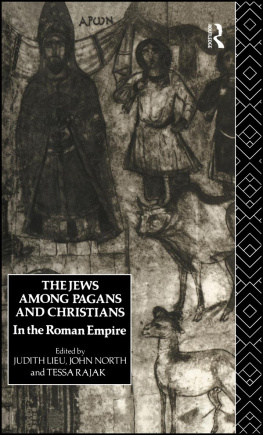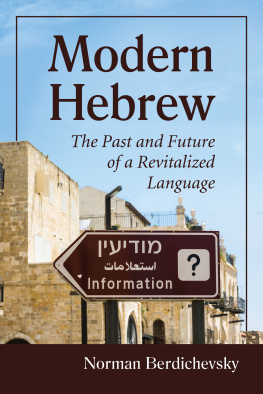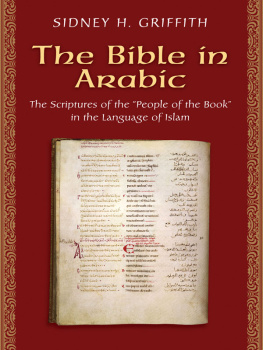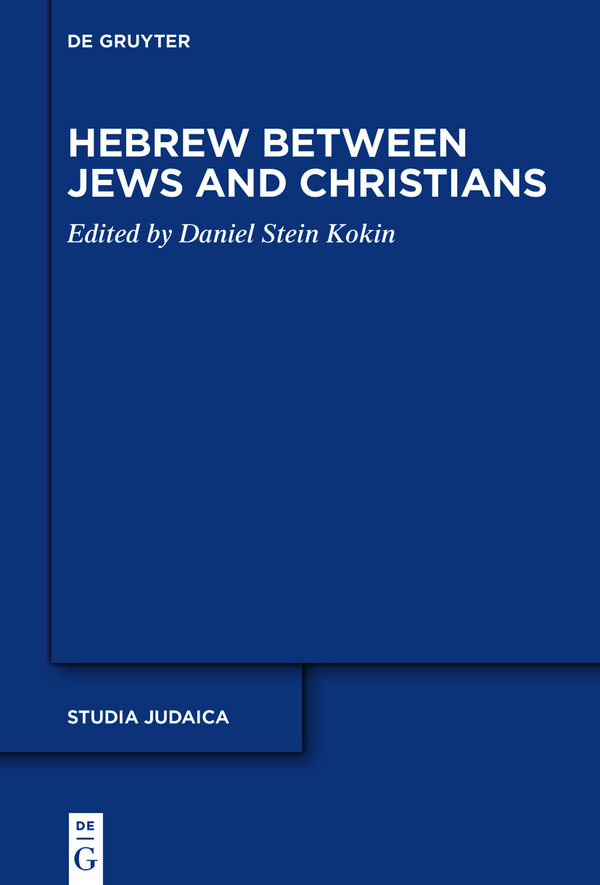Studia Judaica
Forschungen zur Wissenschaft des Judentums
Edited by
Ernst Ludwig Ehrlich
Gnter Stemberger
Charlotte Fonrobert
Elisabeth Hollender
Alexander Samely
Irene Zwiep
Volume
ISBN 9783110338638
e-ISBN (PDF) 9783110339826
e-ISBN (EPUB) 9783110389517
Bibliographic information published by the Deutsche Nationalbibliothek
The Deutsche Nationalbibliothek lists this publication in the Deutsche Nationalbibliografie; detailed bibliographic data are available on the Internet at http://dnb.dnb.de.
2023 Walter de Gruyter GmbH, Berlin/Boston
Introduction
Daniel Stein Kokin
Note: My thanks to Benjamin Ratskoff and Clara Vogt for assistance with formatting; to Gabriel Wasserman for numerous astute observations and corrections; and to all the contributors, the publisher, and especially content editor Alice Meroz, for their patience despite unfortunate delays in the preparation of this volume.
At the heart of this volume is the recognition not only that both Judaism and Christianity have deep interest and a long history of engagement with the Hebrew language, but that Hebrew itself has played a significant role in the relations between them. While this may come as no news to those reading these lines, it is nonetheless rare to encounter an academic treatment of this role committed to examining the two religious traditions as equal partners in this story across the longue dure. Of course, one volume cannot cover every aspect of this story, and there are inevitably major holes, some that I unsuccessfully tried to fill, others that I may not even have thought of, but in assembling it I have tried to adopt as broad as possible a perspective, and to consider topics that have perhaps not achieved sufficient attention, as well as to place antiquity, the Middle Ages, and modernity, and scholars of Judaism and Christianity, theologians, historians, and others in dialogue with one another. The reader will decide if it has succeeded. The risk, of course, is that each contribution will largely stand or fall on its own, in isolation from the others. But I hope that the articles comprising this volume serve to create and convey something of a common language that will prove stimulating. For it is clear to me that a number of major themes cut across the chronological and disciplinary lines that so frequently divide the objects of our research from one another. After first offering a brief summary of each contribution, I would like then to devote some pages to an exploration thereof, accompanied by some of the various sources, questions, and images that have interested me over the course of the many years during which this volume took shape. I confess at the outset that this will be an impressionistic presentation, but hopefully one that will entice its readers to examine Hebrew between Jews and Christians in greater detail.
At the root of any consideration of the place of the Hebrew language among Jews and Christians must be an examination of Hebrews status as the, or possibly merely a, language of revelation. Is divine revelation to be understood as inherently Hebraic in character, only incidentally so, or perhaps even at some root level polyglossic? In the first contribution, The Torah Inscribed/Transcribed in Seventy Languages, Steven Fraade explores the rich early rabbinic meditations on these questions by examining interpretations of the biblical injunction (Deut 27:8) to inscribe the words of the Torah most distinctly (baer heitev) as referring to their translation into the seventy languages of mankind, i.e. all human tongues. As Fraade shows, this rabbinic understanding reflects two contrasting approaches to thinking about the revelation-Hebrew-translation nexus. According to one, this translation process is actually essential for drawing out the full meanings and significance of Scripture. For the other, such translation is primarily a concession to the reality of a multilingual world into which some degree of dissemination of Israels Torah is required. Thus, if one understanding questions, at least to some degree, Hebrews status or sufficiency as the sole language of revelation, its counterpart clings to and reinforces it. We can summarize the point (and simultaneously translate it for translation studies writ large) as follows: can a translation potentially improve upon its original or is it inherently a pale reflection thereof? Fraade concludes that there is no single rabbinic viewpoint with regard to Hebrews status as prior to, or preferred over, other languages, at least with regard to divine revelation.
In either case, the sources explored by Fraade give witness to a striking rabbinic openness to the revelation and interpretation of Scripture as a potentially polylingual phenomenon. In the second chapter, we examine a related foundational issue, the question of Hebrews potential status as the original or Adamic language, albeit from the perspective of a rival religious and linguistic community, that of Syriac Christianity.
In her contribution Hebrew, beloved of God: The Adamic Language in the Thought of Jacob, Bishop of Edessa (c. 633708 CE), Alison Salvesen notes and sets out to explain why, in contrast to nearly all other Syriac writers, Jacob believed that Hebrew was the original and universal human language. Most prominently, she links this rare position to the general theological animosity that abided at the time beween Jacobs Syrian Orthodox Church and that of the Church of the East concerning the critical question as to the separate or united character of Christs human and divine natures. Because the eastern Syrian Church had been strongly influenced by the Greek theologian Theodore of Mopsuestia (350428 CE), who had derogatively described Hebrew as the language composed of mixed Aramaic and Canaanite elements that emerged when Abraham settled in Canaan, Salvesen posits that Jacob felt compelled to adopt the opposing view.
Alongside this horizontal explanation, Salvesen introduces a vertical one, namely the special significance of biblical geography and of the patriarch Abrahams Aramean lineage for the Syrian Christians of Jacobs Edessa and environs, which likely rendered the Syriac language less important as an identity marker for them as compared with the Syriac East. When considered from these dual perspective, Jacobs seemingly strange position becomes eminently reasonable.
Salvesen also proceeds to explore some of the signature cases in which Jacob references both Hebrew etymologies and Jewish exegetical traditions within his vast literary output, further discounting that they reflect potential encounters or relations with contemporary Jews, with whom Jacob would likely have had only limited contact and who would, in any case, have prompted little concern in contrast to both heterodox Christianity and Islam. Finally, Jacobs high regard for the Hebrew language, as reflected in the above-mentioned etymological and exegetical references, ironically induced many modern scholars to mistake him for an actual Hebraist, at a time when this assessment had potential value for raising the perceived status and value of Syriac Studies. In point of fact, Jacob knew very little, if any, Hebrew.
Turning to the medieval period, in his Lingua sacra et diabolica: A Survey of Medieval Christian Views of the Hebrew Language, Irven Resnick shows that despite or precisely because of its status as a holy tongue for Latin Christians, Hebrew provoked fear, owing both to its perceived magical power and potential for misuse. Evidence suggests that Hebrew was understood to be capable of exorcising demons, curing illness, and providing bodily protection, but at times also took on Satanic associations. Furthermore, Christians were well aware of their Hebrew language deficit in comparison with Jews, provoking yet further anxiety. In response, Christians often alleged that Jews had corrupted Hebrew, in some cases adding that its restoration will occur with the return of Jesus.










